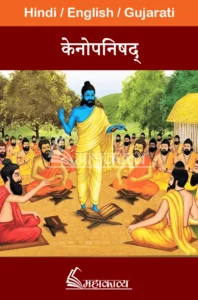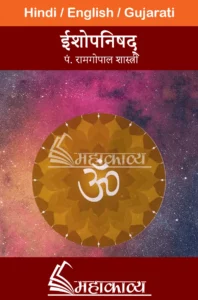Read Prashna Upanishad in English
Prashna Upanishad (Prashna Upanishad in English) is an Upanishad under Atharvaveda branch. This Upanishad is written in Sanskrit language. Its author is considered to be the sages of the Vedic period, but mainly Ved Vyas ji is considered to be the author of many Upanishads. The spokesman of the Sa Upanishad was Acharya Pippalada, who probably lived by eating the flesh of Peepal. Their composition is after the Samhitas. There is no definite opinion about the period of the Upanishads, generally the period of the Upanishads is considered to be from 3000 BC to 500 BC. The following main facts have been considered as the basis for the decision of the Upanishads.
Read here in one click ~ Prashnopanishad in Hindi
Prashna Upanishad (Prashna Upanishad in English) has six sections, which are called six questions. At the beginning of the book, six Rishikumars including Sukesha come to the ashram of Muni Pippalad and want to ask him something. Muni expects them to stay here with restraint for a year and after that whoever wants to ask any question can ask. Two things are known from this; one is that only after staying in the service of the Guru with complete restraint for a few days, the disciple gets the ability to acquire knowledge, the true essence is not attained by just asking questions; and the second thing is that even the Guru should not impart knowledge without fully testing the disciple, because education given to an unworthy person is not only useless, but many times harmful as well. Therefore, education should be given according to the ability of the disciple after giving full consideration to his rights.
Table of Contents
ToggleIntroduction:
The Prashna Upanishad (Prashna Upanishad in English) consists of six questions posed by six students to the sage Pippalada, and his answers to these questions. The questions relate to the nature of the self, the path to liberation, and the nature of Brahman (the ultimate reality).
One of the key teachings of the Prashna Upanishad is the concept of the five sheaths, which are layers of existence that cover the true nature of the self. These sheaths are the physical body, the vital energy, the mind, the intellect, and the blissful self. The Upanishad teaches that by transcending these sheaths, one can realize the true nature of the self.
The Upanishad also discusses the concept of the three states of consciousness, which are waking, dream, and deep sleep. It teaches that these states are transient and illusory, and that the true nature of the self transcends them.
Read This Also
Please wait while flipbook is loading. For more related info, FAQs and issues please refer to DearFlip WordPress Flipbook Plugin Help documentation.





